Guest Editorial by Ernest A. Canning
I am a California attorney. After 31 years of practice, I find myself in the enviable position of semi-retirement. As my practice winds down, I have had the luxury to follow the Coleman election challenge closely, both reading court filings and watching a good deal of the proceedings. I consider The BRAD BLOG the most extensive and thorough source of the dangers of E-voting. I felt, however, it would be useful to provide a legal analysis of the present state of the Coleman challenge.
Brad Friedman's described the latest effort by team Coleman to challenge absentee ballots it had previously agreed were properly opened and counted, as a "flip-flop,". While accurate, the term does not begin describe the deep legal dilemma now faced by Norm Coleman's attorneys in the U.S. Senate election contest in Minnesota...
On Dec. 18, 2008, in response to Coleman's effort to prevent the opening and counting of erroneously rejected absentee ballots, the Minnesota Supreme Court ordered that local election officials open and count absentee ballots only where both the Coleman and Al Franken campaigns agreed. The ensuing process resulted in the opening and counting of 933 absentee ballots. These 933 absentee ballots produced a net gain of 176 votes for Franken.
After Franken was declared the winner on Jan. 5, 2009 by the State Canvassing Board, Coleman filed notice he was contesting the election. On Feb. 3, 2009 the Coleman and Franken legal teams entered a legally binding stipulation [PDF] that the 933 ballots were "properly and lawfully counted" and "properly and lawfully included in the results of the 2008 United States Senate Election as certified by the Minnesota State Canvassing Board." As part of the stipulation, Coleman agreed to "dismiss with prejudice all claims in the Notice of Contest relating to the 933 Ballots." These stipulations were approved by the three judge panel selected to preside over the election contest.
The Coleman legal team then adopted a strategy of seeking to have approximately 4,800 additional absentee ballots opened and counted. It sought to by-pass the strict anti-fraud requirements of Minnesota law for absentee ballots --- for example, the voter must be registered and must sign the return envelope before a witness who is also a registered voter; the addresses of both the witness and the voter must be on the ballot, and the voter's address must be the same as that listed on their absentee ballot application. Coleman sought to offer the absentee ballots en masse, by simply categorizing them under the reasons for rejection, as given by election officials.
On Feb. 13, 2009 the three-judge panel expressly rejected [PDF] Coleman's position, writing: "Proving that the reason given by election officials for rejecting a ballot was invalid is not tantamount to proving that it was legally cast." The court imposed a burden upon the Coleman legal team to prove that a previously rejected absentee ballot had, indeed, been lawfully cast.
The weakness of Coleman's strategy, in simply pointing to whether an absentee ballot was improperly rejected, was underscored by the subsequent testimony of a county election official. Coleman's attorney brought out the fact that a ballot was improperly rejected, and the county official, looking only at the return envelope, conceded she saw no reason why the ballot should not be opened and counted. However, cross-examination by Franken's attorney revealed that local election officials had notified the voter of the error and that the same voter had signed the precinct ledger and voted on Election Day. It was revealed that by now opening and counting that particular "improperly rejected absentee ballot", the court would be permitting one individual to vote twice.
While Franken attorney Marc Elias was circumspect in estimating the impact the February 13th ruling had on the "ballot universe" (the number of unopened absentee ballots still in play), the increasingly strident claims made by the Coleman legal team both inside and outside the courtroom, about Minnesota's allegedly "fatally flawed" electoral system, along with a repeated inability to introduce relevant, admissible evidence during the past week, strongly suggests that the Coleman effort to demonstrate that he had received more lawfully cast votes than Franken is dead in its tracks.
In a Feb. 16, 2009 letter seeking reconsideration [PDF] of the Feb. 13 order, Coleman suggested that amongst the 933 ballots previously found to have been "properly opened and counted" there were "scores" that did not meet the standards set forth in the court's order. On Feb. 17, 2009 the three-judge panel summarily denied this request [PDF]. In a separate ruling [PDF] excluding a Coleman expert witness on this issue, the court stated: "The Court will be reviewing all ballots presented according to the uniform standard contained in Minnesota Statutes….It is irrelevant whether there were irregularities between the counties in applying Minnesota Statutes…prior to this election contest."
It was against this background that Coleman filed a Feb. 20, 2009 motion seeking a temporary injunction [PDF] to prevent the Secretary of State from redacting the envelopes associated with the previously counted 933 ballots, contending that "many" of these ballots opened and counted "fall into one or more of the categories of ballots that the Court has now ruled are 'not legally cast'" Coleman suggests that his earlier stipulation was based on the assumption that the 933 would be "reflective of the standards" that the court would apply to the remaining ballots.
Having practiced law for more than 31 years, I was stunned by this motion.
As The BRAD BLOG previously observed, the Franken legal team had pointed to questions of estoppel and invited error with respect to Coleman's effort to reverse legal positions it had taken previously during the recount. This latest reversal entails something far more significant. The court-approved stipulation that the 933 votes were lawfully cast and counted, and agreement to dismiss, with prejudice, all claims made against the 933 ballots amounted to a final ruling by the court that the 933 were lawfully cast ballots. Coleman waived the right to so much as even suggest that any of those 933 ballots were not lawfully cast. Coleman's motion is frivolous and, as suggested by Franken's opposition [PDF], warrants the imposition of sanctions.
The status of this election contest is deeply troubling. It has become increasingly apparent that the Coleman position is devoid of merit, yet his team plods on, delaying the seating of a U.S. Senator at a time when every vote has become essential to the new administration's efforts to bring this nation back from the edge of an economic abyss. Perhaps, for the Party of "No" delay is a victory.
===
Ernest A. Canning has been an active member of the California State Bar since 1977 and has practiced in the fields of civil litigation and workers' compensation at both the trial and appellate levels. He graduated from Southwestern University School of Law where he served as a student director of the clinical studies department and authored a Law Review Article, Executive Privilege: Myths & Realities. He received an MA in political science at Cal State University Northridge and a BA in political science from UCLA. He's also a Vietnam vet (4th infantry, Central Highlands 1968).


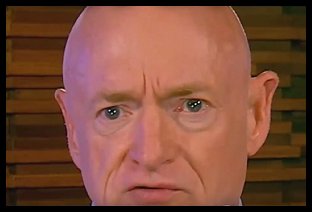 Presidential Illegality and the Duty to Disobey
Presidential Illegality and the Duty to Disobey Sunday 'Leave 'em in Stitches' Toons
Sunday 'Leave 'em in Stitches' Toons President of United States Calls for Killing Democratic Officials: 'BradCast' 11/20/25
President of United States Calls for Killing Democratic Officials: 'BradCast' 11/20/25 'Green News Report' 11/20/25
'Green News Report' 11/20/25
 Is MAGA Finally Beginning to Fall Apart?: 'BradCast' 11/19/25
Is MAGA Finally Beginning to Fall Apart?: 'BradCast' 11/19/25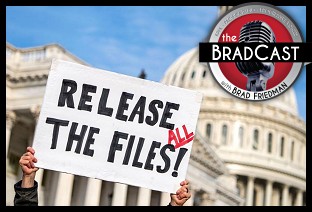 Trump's Terrible, Horrible,
Trump's Terrible, Horrible, 'Green News Report' 11/18/25
'Green News Report' 11/18/25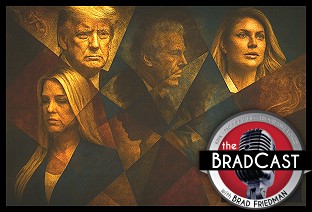 A Kaleidoscope of Trump Corruption: 'BradCast' 11/17/25
A Kaleidoscope of Trump Corruption: 'BradCast' 11/17/25 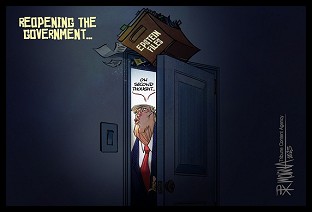 Sunday 'Back to Business' Toons
Sunday 'Back to Business' Toons Trump DOJ Takes Stand
Trump DOJ Takes Stand 'Green News Report' 11/13/25
'Green News Report' 11/13/25 Mamdani's 'Surprisingly Affordable' Afford-ability Agenda for NYC: 'BradCast' 11/12
Mamdani's 'Surprisingly Affordable' Afford-ability Agenda for NYC: 'BradCast' 11/12 After the Shutdown and Before the Next One: 'BradCast' 11/11/25
After the Shutdown and Before the Next One: 'BradCast' 11/11/25 'Green News Report' 11/11/25
'Green News Report' 11/11/25 Victories for Democracy in Election 2025; Also: 7 Dems, 1 Indie Vote to End Shutdown in Senate: 'BradCast' 11/10/25
Victories for Democracy in Election 2025; Also: 7 Dems, 1 Indie Vote to End Shutdown in Senate: 'BradCast' 11/10/25 Sunday 'Ass Kicking' Toons
Sunday 'Ass Kicking' Toons 'We Can See Light at the End of the Tunnel' After Election 2025: 'BradCast' 11/6/25
'We Can See Light at the End of the Tunnel' After Election 2025: 'BradCast' 11/6/25 'Green News Report' 11/6/25
'Green News Report' 11/6/25 BLUE WAVE! Dems Win Everything Everywhere All at Once: 'BradCast' 11/5/25
BLUE WAVE! Dems Win Everything Everywhere All at Once: 'BradCast' 11/5/25 Repub Thuggery As Americans Vote: 'BradCast' 11/4/25
Repub Thuggery As Americans Vote: 'BradCast' 11/4/25 Last Call(s) Before Election Day 2025: 'BradCast' 11/3/25
Last Call(s) Before Election Day 2025: 'BradCast' 11/3/25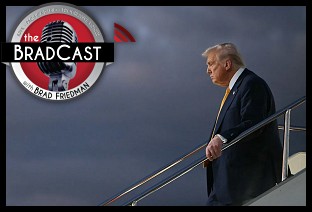 A Pretty Weak 'Strongman': 'BradCast' 10/30/25
A Pretty Weak 'Strongman': 'BradCast' 10/30/25 Proposal for 'Politically Viable Wealth Tax' Takes Shape in CA: 'BradCast' 10/29
Proposal for 'Politically Viable Wealth Tax' Takes Shape in CA: 'BradCast' 10/29 Monster Storm, Endless Wars, Gamed Elections: 'BradCast' 10/28/25
Monster Storm, Endless Wars, Gamed Elections: 'BradCast' 10/28/25 Let's Play 'Who Wants to Be a U.S. Citizen?'!: 'BradCast' 10/27/25
Let's Play 'Who Wants to Be a U.S. Citizen?'!: 'BradCast' 10/27/25 Exiled NOAA Scientists Resurrect Critical Disaster Database: 'BradCast' 10/23/25
Exiled NOAA Scientists Resurrect Critical Disaster Database: 'BradCast' 10/23/25
 VA GOP VOTER REG FRAUDSTER OFF HOOK
VA GOP VOTER REG FRAUDSTER OFF HOOK Criminal GOP Voter Registration Fraud Probe Expanding in VA
Criminal GOP Voter Registration Fraud Probe Expanding in VA DOJ PROBE SOUGHT AFTER VA ARREST
DOJ PROBE SOUGHT AFTER VA ARREST Arrest in VA: GOP Voter Reg Scandal Widens
Arrest in VA: GOP Voter Reg Scandal Widens ALL TOGETHER: ROVE, SPROUL, KOCHS, RNC
ALL TOGETHER: ROVE, SPROUL, KOCHS, RNC LATimes: RNC's 'Fired' Sproul Working for Repubs in 'as Many as 30 States'
LATimes: RNC's 'Fired' Sproul Working for Repubs in 'as Many as 30 States' 'Fired' Sproul Group 'Cloned', Still Working for Republicans in At Least 10 States
'Fired' Sproul Group 'Cloned', Still Working for Republicans in At Least 10 States FINALLY: FOX ON GOP REG FRAUD SCANDAL
FINALLY: FOX ON GOP REG FRAUD SCANDAL COLORADO FOLLOWS FLORIDA WITH GOP CRIMINAL INVESTIGATION
COLORADO FOLLOWS FLORIDA WITH GOP CRIMINAL INVESTIGATION CRIMINAL PROBE LAUNCHED INTO GOP VOTER REGISTRATION FRAUD SCANDAL IN FL
CRIMINAL PROBE LAUNCHED INTO GOP VOTER REGISTRATION FRAUD SCANDAL IN FL Brad Breaks PA Photo ID & GOP Registration Fraud Scandal News on Hartmann TV
Brad Breaks PA Photo ID & GOP Registration Fraud Scandal News on Hartmann TV  CAUGHT ON TAPE: COORDINATED NATIONWIDE GOP VOTER REG SCAM
CAUGHT ON TAPE: COORDINATED NATIONWIDE GOP VOTER REG SCAM CRIMINAL ELECTION FRAUD COMPLAINT FILED AGAINST GOP 'FRAUD' FIRM
CRIMINAL ELECTION FRAUD COMPLAINT FILED AGAINST GOP 'FRAUD' FIRM RICK SCOTT GETS ROLLED IN GOP REGISTRATION FRAUD SCANDAL
RICK SCOTT GETS ROLLED IN GOP REGISTRATION FRAUD SCANDAL VIDEO: Brad Breaks GOP Reg Fraud Scandal on Hartmann TV
VIDEO: Brad Breaks GOP Reg Fraud Scandal on Hartmann TV RNC FIRES NATIONAL VOTER REGISTRATION FIRM FOR FRAUD
RNC FIRES NATIONAL VOTER REGISTRATION FIRM FOR FRAUD EXCLUSIVE: Intvw w/ FL Official Who First Discovered GOP Reg Fraud
EXCLUSIVE: Intvw w/ FL Official Who First Discovered GOP Reg Fraud GOP REGISTRATION FRAUD FOUND IN FL
GOP REGISTRATION FRAUD FOUND IN FL

































